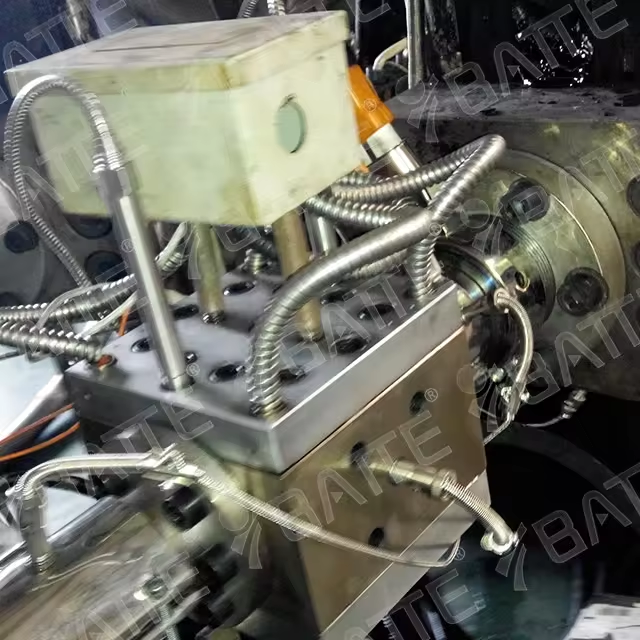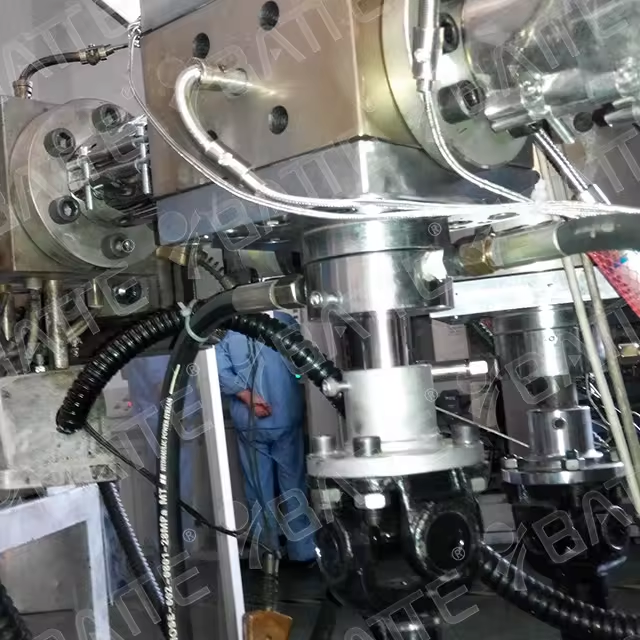The polymer melt pump for sheet extrusion is an important equipment in the plastic processing industry, widely used in the production process of plastic products such as sheets, sheets, and films. Its main function is to uniformly transport the molten polymer melt from the extruder to the mold, ensuring the quality and stability of the product. So, how does the polymer melt pump for sheet extrusion work?
Firstly, we need to understand the basic structure of polymer melt pumps. Generally speaking, a melt pump is mainly composed of a pump body, rotor, bearings, seals, and other parts. The pump body is usually made of high-temperature alloy materials, which can withstand high temperature and high pressure working environments. The rotor is the core component of the melt pump, which sucks in the melt from the inlet through high-speed rotation and then pushes it to the outlet. Bearings are responsible for supporting the rotation of the rotor while maintaining its stability. The sealing element plays a role in preventing melt leakage.

During the working process, the polymer melt is first heated and melted by the extruder, becoming a melt with certain fluidity. Then, the melt is transported to the inlet of the melt pump, and through the high-speed rotation of the rotor, the melt is sucked into the pump body. Inside the pump body, the melt is compressed and pushed by the rotor, generating a certain pressure and flow rate, and then transported to the mold through the outlet.
The working principle of a melt pump can be simply summarized as the "extrusion push" process. Under the high-speed rotation of the rotor, the melt is continuously squeezed and pushed, thereby achieving uniform transportation of the melt. At the same time, the melt pump also has a certain pressure regulation function, which can achieve precise control of the melt flow rate by adjusting the rotor speed and the inlet and outlet pressure of the pump body.
In addition to the basic squeezing pushing process, the melt pump also needs to pay attention to the following points during operation:
1. Temperature control: Due to the high sensitivity of polymer melt to temperature, the melt pump needs to maintain a certain degree of temperature stability during operation. Generally speaking, the melt pump is equipped with a dedicated temperature control system, which controls the temperature of the melt through heating and cooling devices to ensure its fluidity and stability.
2. Pressure control: The melt pump will generate a certain amount of pressure during operation, so corresponding pressure control systems need to be equipped to maintain stable output pressure. By adjusting the speed of the rotor and the opening of the inlet and outlet valves, precise adjustment of the melt flow rate can be achieved.
3. Cleaning and maintenance: Due to the presence of certain impurities and particles in the polymer melt, prolonged use may lead to the accumulation of dirt and impurities inside the melt pump. Therefore, it is very important to regularly clean and maintain the melt pump. This not only extends the service life of the melt pump, but also ensures the quality and stability of the product.

Overall, the polymer melt pump for sheet extrusion is one of the indispensable equipment in the plastic processing industry. It uniformly delivers the molten polymer melt into the mold through extrusion pushing, providing a stable and reliable melt supply for the production of plastic products. At the same time, the melt pump also needs to be equipped with corresponding temperature and pressure control systems, as well as cleaning and maintenance measures, to ensure its normal operation and extend its service life. With the continuous progress of technology and the rapid development of the plastic processing industry, it is believed that future melt pumps will become more intelligent, efficient, and environmentally friendly, providing higher quality services for the production of plastic products.
Email: info@battemachinery.com
WhatsApp: +86 158 38331071
